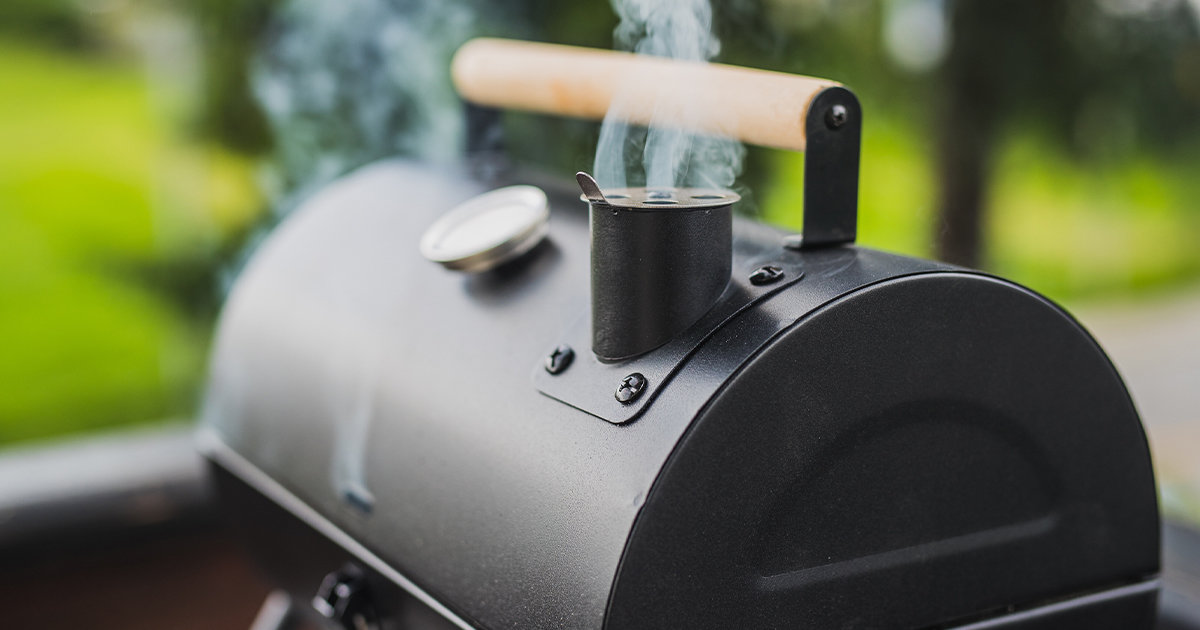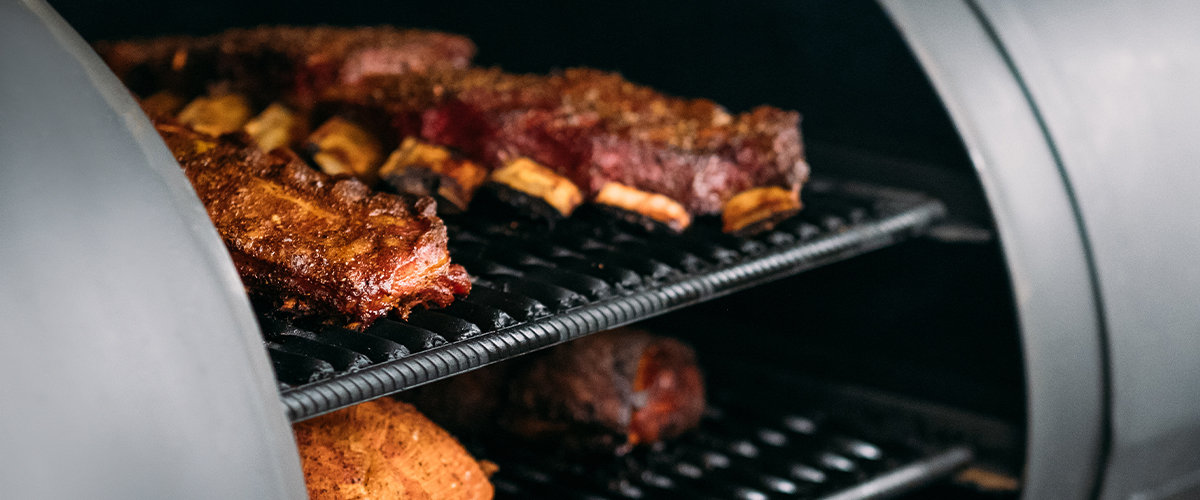
We collect basic website visitor information on this website and store it in cookies. We also utilize Google Analytics to track page view information to assist us in improving our website.
Spring Season starting to book up. Promotions Available for Winter.

Are you melting away the snow with dreams of barbecuing? You’re not alone.
These dreams will eventually come true, so you had better be prepared with the best cooking ware options in your arsenal. Previously, we’ve talked about the best grills, the fuels you can use, and how to clean the grills — but there’s much more.
The right selection of outdoor cooking ware will make your barbecuing skills the talk of the town.
Let’s get grilling!
Smokers are designed for cooking food slowly over low heat.
Just like all good things take time, so does smoking a piece of meat. It requires close attention as it takes its time to cook in the smoker.
But it’s all worth it when you think of that piece of meat melting in your mouth and the flavours bursting on your tongue.
A word of caution here though, if you smoke the meat too much, it will end up tasting bitter and acidic.
Smokers don’t just work on the flavour of the meat, but they also work on its look. As the meat absorbs smoke, it develops a dark, chewy, spicy, tangy, and crust-like texture on the outside. This is called the bark. It coats and protects the tenderness and juiciness of the meat inside it.
Smokers ensure the meat doesn’t lose all its moisture as it cooks. Slow cooking allows meat to retain its collagen — the connective tissue — helping retain the softness and juiciness.
Smokers have become popular over time because of the variety of fuels you can use with them, like electricity, wood pellets, and even gas. Remember though, the flavour you’re looking for may only come with traditional fuels, like wood, charcoal, and pellets.
Different types of fuel will give the meat different flavours. You can choose a new taste for every day of the summer. If you have two smokers, you can vary the taste on the same day, too.
Smokers come in a range of sizes and styles, including offset smokers, drum smokers, and cabinet smokers.
Barbecue experts consider this style as the most proper way of smoking meat.
The smoker has a barrel-shaped belly that is laid out horizontally. The heat source is set off to the side of the main chamber. The fuel most commonly used for this style is charcoal or wood. The latest models could also have temperature control options, but you still need to handle heat and airflow. Inexperienced grillers may find it difficult to control temperature variance when using offset smokers.
Look for the built-in large heat baffles and reverse airflow features — they certainly help and might just save the day.
Just as the name suggests, these smokers are made of an upright cabinet-shaped cooking chamber. The heat source is directly below the vertical barrel.
This design makes it easier for even temperature distribution throughout the cooking chamber, making it convenient to manage heat and smoke that naturally rise toward the food. Vertical smokers are mostly electric but some models will also work with charcoal, pellet, and gas.
Unconventional smokers are somewhere in the middle of offset and vertical smokers. But they’re way more versatile than either of the previous categories.

Unconventional smokers can look like a standard grill but it’s what’s inside that matters. Depending on how you position the charcoal basket inside the body, the smoker can function like a charcoal grill or as a vertical or offset smoker.
All models of smokers can be built in as part of an amazing outdoor kitchen in your backyard. Or if you value mobility, you could buy a more portable option.
Spit roasters are popular when you need to cook large pieces of meat, like whole chicken, slowly over an open fire. Their winning feature? Rotation.
The meat is mounted on a skewer that turns it over the fire for evenly cooked tender and succulent results.
Most spit roasters use wood and charcoal as fuel, but they can also function well on gas.
When it comes to roasting, meat prep is crucial for getting the right results. It’s second only to knowing how to control the fire and temperature. You can get the pre-cooking routine down pat, yet mess it up while cooking. One reason for that could be because of the pan you use. An aluminum drip pan will help prevent flare ups. You’ll also need a butcher’s twine (to tie the meat), proper mitts, and a meat thermometer, which you will use to check for optimal cooking temperature.
Much like smoking meat, roasting it takes great patience and careful process. You will end up with dry, chewy, and stringy meat if you use very high heat or cook the meat without properly marinating it.
Outdoor ovens are multi-purpose devices and can be used for baking, roasting, and grilling.
If you have a large backyard and are prone to having large summer gatherings — outdoor ovens are the way to go. They can easily be fixed into a structure in the backyard or come installed on a portable cart for mobility around the yard.
When shopping for an outdoor oven, consider the shape, design, and materials it’s built with. You’re looking for substances that retain high temperatures for best performance. All ovens need to be pre-heated slowly so the cooking chamber collects and retains heat longer.
Ovens use a variety of fuels, from traditional to modern to a combination of the two.
A wood-burning oven feeds heat into the cooking chamber, which can be offset from the center. This style uses radiated heat to do the trick.
Gas ovens are novice-friendly and make cooking a breeze, because they’re easy to light and allow you to conveniently set the temperature. A gas-powered oven may be a better-suited barbecuing option if you’re new to this cooking ware. You can either connect it directly to the house gas line or go the portable way with propane.
You can always upgrade to an oven that uses a different fuel source or get a hybrid model. With this style, you can enjoy the wood-burning aroma and control the cooking temperature to your liking. Hybrid ovens come with a special cover over the gas burner to protect it from wood soot, so it doesn’t conk out on you every summer.
Barbecuing isn’t just a yes-in-my-backyard activity, as avid campers, we’re also prone to indulging ourselves in some outdoor cooking while reconnecting with nature.
We’ve talked about technology and all the bells and whistles it adds to outdoor cooking ware.
Let’s also consider these traditional styles.
These are portable devices that can run on a variety of fuels, including propane, butane, and wood.
Let’s begin by nailing down the right stove style. There are two main types: freestanding models with legs and the more portable tabletop designs.
Freestanding stoves are usually larger, and heavier, feature two or more burners, and generally produce more heat than tabletop units.
If you’re camping with a group and don’t want to worry about carrying the stove from one place to another, go freestanding. Another benefit is that these stoves can be set up just about anywhere — that’s right, they don’t necessarily need a flat surface.
On the other hand, a tabletop stove can be moved from campsite to campsite.
Prop it on a picnic table or bench, and you’re ready to get cooking. Because they’re legless, tabletop stoves are smaller, compact, and easily portable. But the smaller size means less cooking capacity.
These age-old tried and tested barbecuing tools are the best option for open camping.
Fire pits are a great way to cook food of all sizes, from marshmallows to hot dogs, and even a full roast. Plus, they’re great for cozying up on chilly nights.
A word about the tools of the trade:
In our last installment on barbecuing, we talked about a variety of grilling tools.
Here’s another one that’s a must-have for anyone that claims to be a barbecue buff.
Why a Dutch oven?

Well, because they’re perfect for making a variety of food.
A Dutch oven is a pot used for cooking on — well, pretty much on any type of fire. The heavily insulated materials used to make Dutch ovens prevent the food from burning, even if cooked over high heat.
The thickness of the pot’s walls helps maintain a constant temperature after it’s warmed up. The heat then radiates inside the container so the food cooks evenly. The tightly sealed lid retains moisture by pushing condensation back onto the food, making it succulent and tender.
A classic way of cooking with a Dutch oven is to immerse it in hot coals for a delicious, juicy, and flavourful dinner.
We’ve written extensively about how to keep your barbecue cooking ware clean for a longer life and better performance. Read our barbecue cleaning hacks here to make life after barbecuing easier.
When you’re ready for a fantastic outdoor kitchen in your yard, contact the experts at Decks By Premier.

